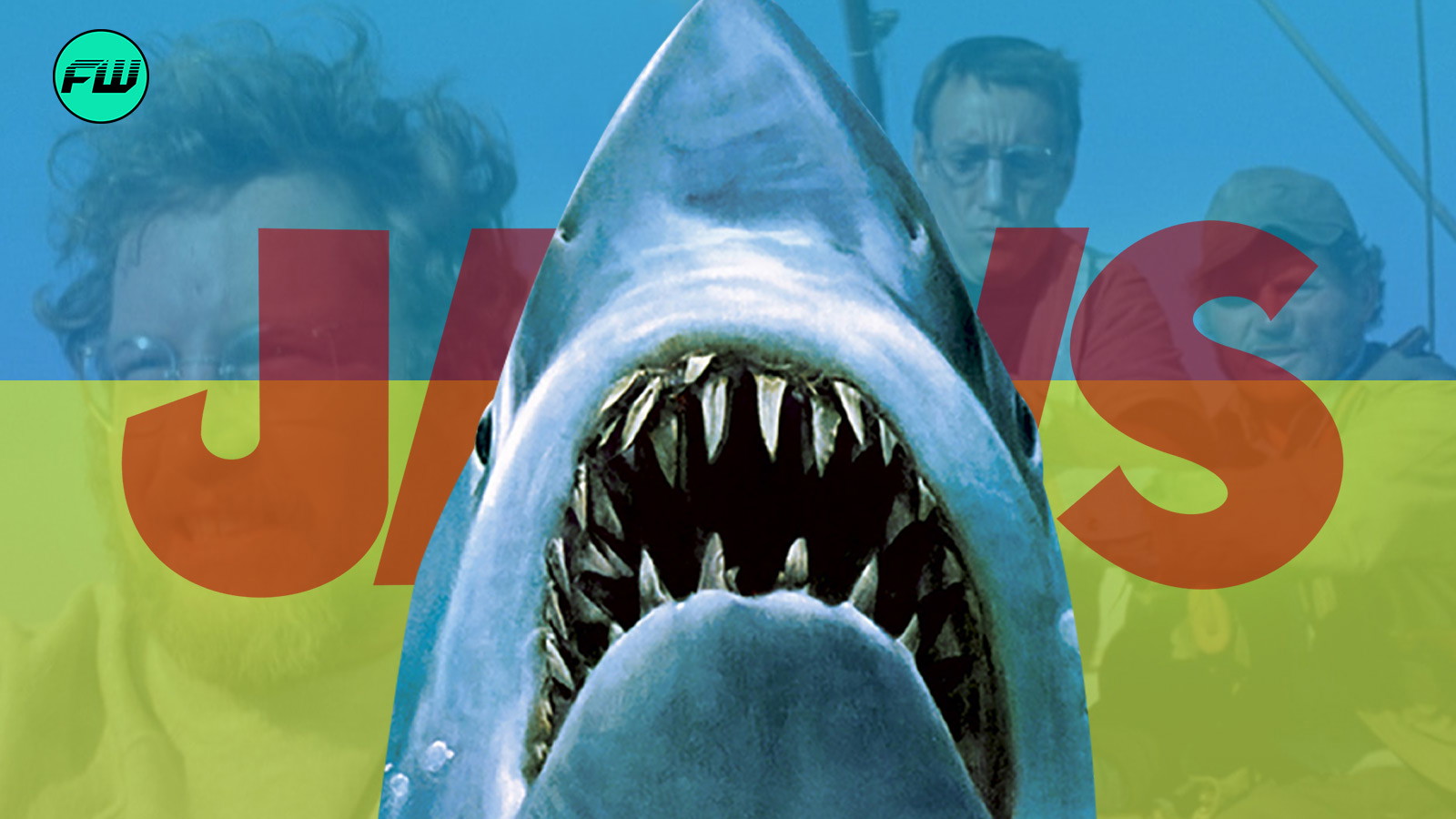
This month will mark 50 years since the original Jaws first swam its way into movie theaters in 1975. Director Steven Spielberg’s fourth feature film ever, and the second to be given a major theatrical release after The Sugarland Express, the film made waves with its groundbreaking visual effects, masterful use of tension, and an iconic John Williams score that only made audiences more terrified to go back in the water.
But after half-a-century of evolution in both the blockbuster space and within Spielberg’s own filmography, is the originator of what we now know as the summer blockbuster still at the top of the food chain or was it simply a big fish in a little pond? (Okay, no more fish/ocean puns from here on out. I promise) Well, let’s take a look back at the 1975 original to see just how well it holds up.
What happens in Jaws?
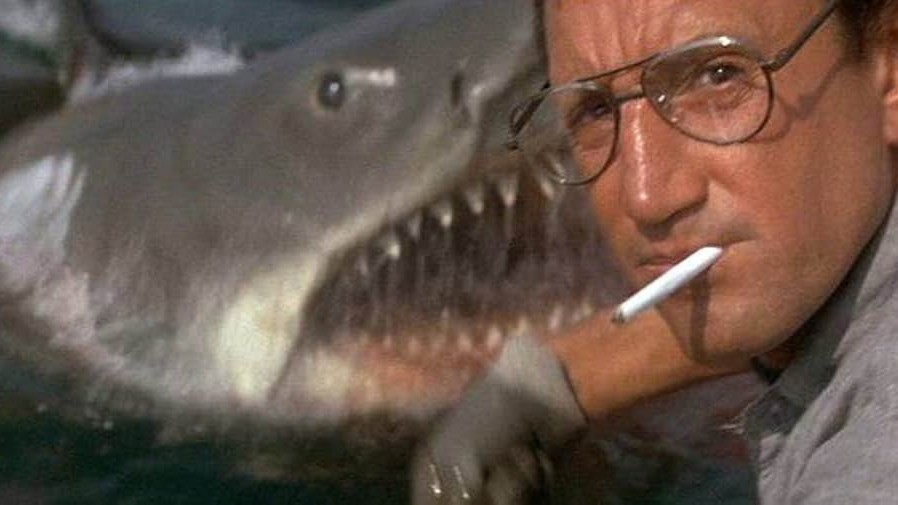
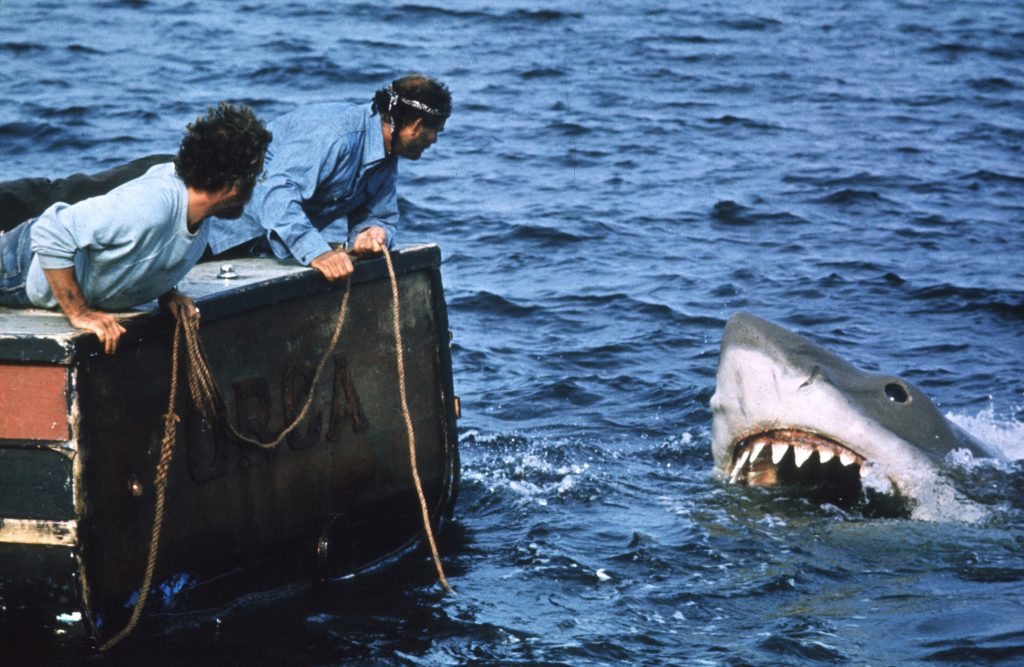
Richard Dreyfuss
© 1975 Universal
Photo by Bud Gray
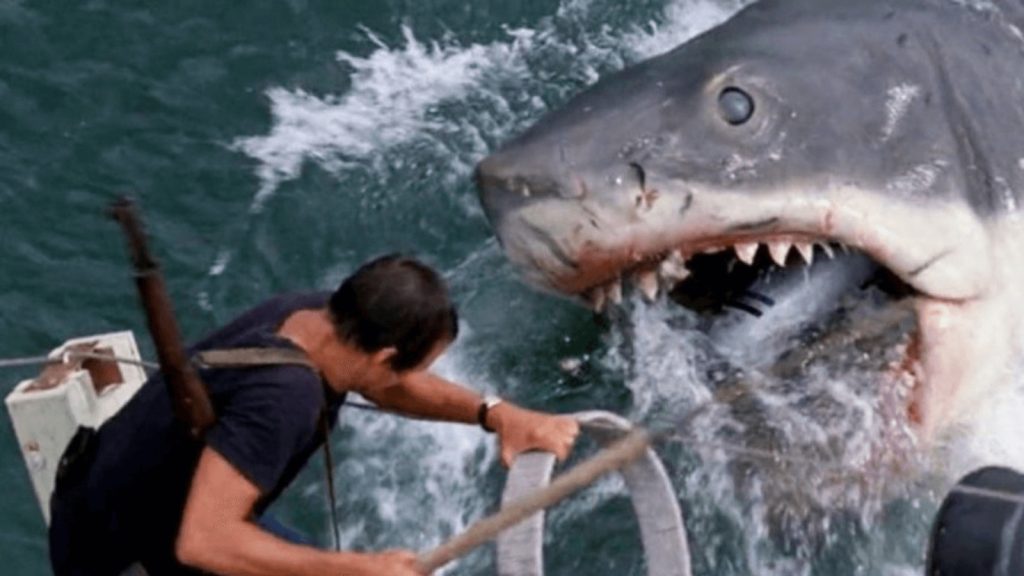
In the small beach town of Amity Island, local police chief Martin Brody, played by Roy Scheider, orders the local beaches to be closed following the death of a young woman via shark attack. However, Mayor Larry Vaughn, played by Murray Hamilton, vetoes this decision out of fear it will decimate the town’s economy leading up to the 4th of July weekend. Though, to his credit, the mayor does offer a substantial reward to shark hunters and only assumes complete safety after said hunters capture a tiger shark.
But through the help of oceanographer Matt Hooper, played by Richard Dreyfuss, Brody confirms that the killer shark is still out there, is much bigger than an ordinary shark, has already killed another local fisherman, and will be extremely attracted to large groups of people splashing around in the water. The mayor fails to heed these warnings and both allows and encourages 4th of July crowds to spend their holiday at the Amity beaches anyway, leading to a shark attack that kills another local fisherman and hospitalizes Brody’s son, Michael.
Finally realizing the gravity of the situation, Mayor Vaughn allows Brody, Hooper, and local shark hunter Quint, played by Robert Shaw, to take their own boat out to sea to kill the shark once and for all. The trio soon encounters the shark and attempts to harpoon it before it disappears back into the ocean. That night, the trio begins to bond over their various scars, both literal and figurative, and encounter the shark again the next day as it rams into the boat’s hull, damaging the engine. The crew manages to make it to shallower waters, but not without losing the engine entirely as the boat begins to sink.
And in his determination to kill the shark on his own, Quint destroys the radio, leaving them with no way to call for help. In a last-ditch effort to take the shark down, Hooper lures it into a shark-proof cage in an attempt to kill it via lethal injection. The shark subsequently attacks the cage, leaps onto the stern of the boat, and devours Quint. Brody then shoves a scuba tank into the shark’s mouth and shoots said tank with a rifle, finally killing the beast in the resulting explosion.
Why It Works
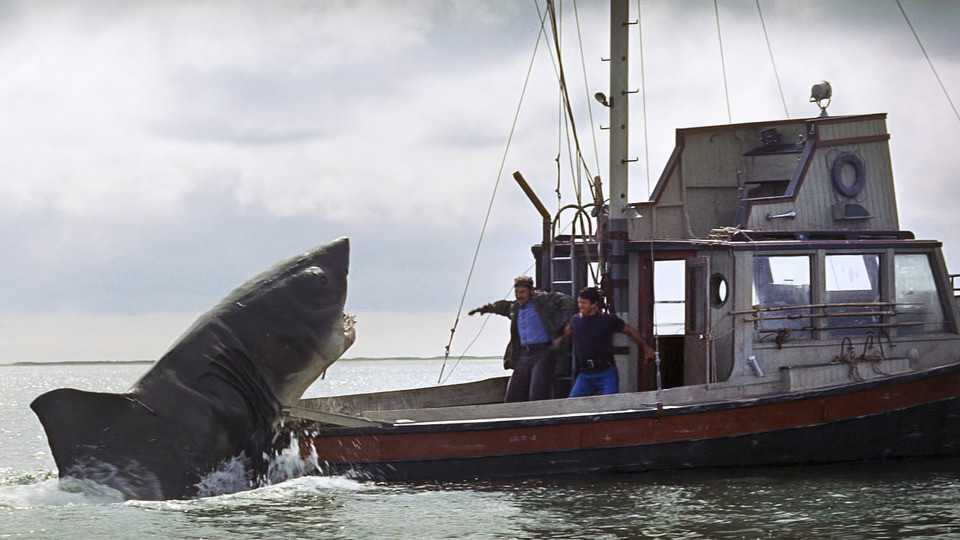

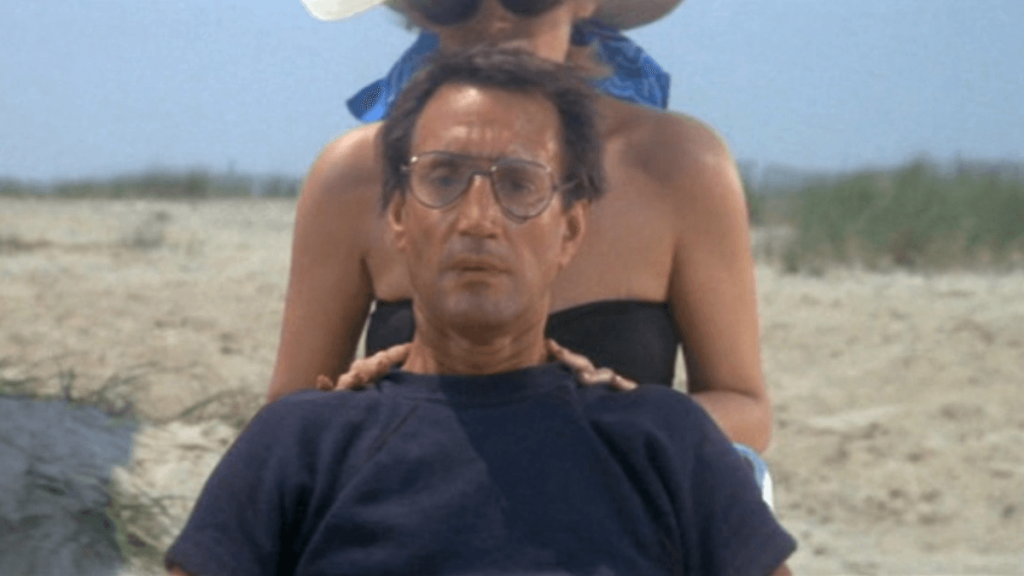
It’s hard to talk about how good Jaws is without walking over well-treaded ground. Yes, the iconic John Williams score ranks among the prolific composer’s best. Yes, Steven Spielberg masking the infamously unreliable shark effects by mostly alluding to the creature’s presence is an ingenious creative choice that creates a constantly building sense of tension that makes the shark’s few appearances that much more impactful. But all of you already know that.
What I want to focus on here is how Jaws helped to define the modern summer blockbuster not as a spectacle but as a character piece. What do I mean by that? Well, think of any given modern blockbuster franchise. People may come to the John Wick movies for cool gunfights, but they stay with those and not with the countless imitators because of how much they enjoy Keanu Reeves as John Wick and his specific emotional arc throughout the series. Likewise, people may come to the Marvel movies for colorful costumes and superpowered showdowns, but they stay for the characters’ relatable human journeys and the ever-evolving relationships and back-and-forth between those characters.
I believe Jaws not only exists in a similar space but also helped to originate this concept. People may have initially come for the shark effects and gore, but they stay, even after fifty years, because of the characters. Quint’s obsessive, PTSD-induced paranoia, Brody’s practical-minded protective interests, Hooper being more or less a regular guy who just happens to study sharks and therefore gets dragged into a mess he had no intention of being part of. These are relatable, well-rounded, three-dimensional characters that have kept audiences new and old invested in this story.
And if you need further proof, look at how audiences flocked to the original Star Wars, considered the other major progenitor of the modern blockbuster, two years later. People may have initially come for space battles and laser swords, but they stayed for compelling, well-rounded, three-dimensional heroes like Luke Skywalker and Han Solo, just like they did for the intrepid shark-hunting trio in Jaws. Needless to say, the film was a massive critical and financial success, becoming the highest-grossing movie of all time until the aforementioned Star Wars. And though it would spawn three sequels, the original remains the best even fifty years later, thanks to its incredible effects, its tension-building, its music, and yes, its characters.
This post belongs to FandomWire and first appeared on FandomWire
